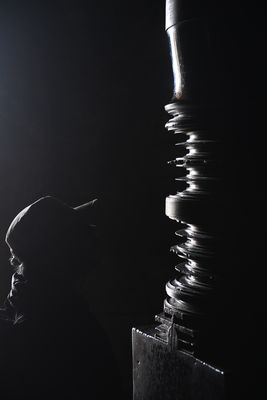Soapstones are easier to chisel compared with granite; they also become harder with time. This made them ideal for the intricate carvings at the Chennakeshava Temple in Beluru, once the capital of the Hoysala kingdom, now, in Karnataka’s Hassan district. The 42 bracket sculptures of shilabalike or madanikas, which represent feminine beauty, are the main attraction in this temple complex. Some are almost naked, strategically covered by large jewels carved with minute details by Hoysala-era master sculptors. Hoysala temples at Beluru, Halebeedu and Somanathapura are significant in Karnataka’s architectural heritage and get prominence in the tourism circuit.
Hampi and Pattadakal in Karnataka have been UNESCO world heritage sites for more than three decades. The Hoysala wonders are waiting in a tentative list since 2014. Officials from The International Council on Monuments and Sites, which recommends the finalisation of world heritage sites to UNESCO, have visited the three Hoysala temples this year as they are clubbed together as one site. If added to UNESCO’s list, this will become the third site in Karnataka and the 41st in the country.
Belur, Halebeedu and Somanathpura will continue to get attention irrespective of world heritage status. But, there are more than 100 Hoysala temples and Jain basadis built between the 11th century and the 14th century. They are concentrated in south Karnataka. Most of them do not get a mention in tourism brochures; some are either neglected or modified.
At the Someshwara Temple in Haranahalli in Hassan district, the tendrils of a tomato plant reach towards a naked dancer as if trying to cover her with the verdant veil of vegetation. There are green creepers covering the invaluable carvings at the main shikhara. The temple has been neglected since the shivling was stolen from the sanctum sanctorum. The craftsmanship, which matches famous Hoysala temples, is now disappearing amid bushes and creepers. This, despite the site being in a populated village. Anyone who enters now will feel like Indiana Jones in the Temple of Doom!
Not far from the famous Hoysaleshwara Temple in Halebeedu is the Kedareshwara temple complex. It is constructed exactly like other big Hoysala shrines. The temple is surrounded by a well-maintained lawn and the compound is fenced. But, this temple, too, attracts less people compared with the famous temples. Sculptures of makaras (a mythical creature), peacocks and ornaments adorn the base of the main temple. There are also statutes of gods and goddesses accompanied by madanikas. Some of the madanikas are carved totally naked here. Unknown miscreants have smeared clay on these statues to maintain modesty—a mutilation of the original work.
Kedareshwara is not the only temple where the statues have been damaged. Even at moderately maintained temples, statues have been damaged by intruders over the centuries. At Angadi village in Mudigere taluk in Chikkamagaluru, from where the founder of the Hoysala empire, Sala, hails, temples have been modified with new structures. This is the story of many other Hoysala temples. Newly built, modern shikaras in many temples mar the original style.
Sri Dharmasthala Manjunatheshwara Dharmothana Trust has restored a few fallen temples in partnership with villagers and the government. They rebuild the temple by strengthening the structure and replacing missing or damaged stones. Sometimes, retouching the visage of damaged sculptures leads to a mismatch with the Hoysala-style carvings.
Soapstones may become harder with age, but not so hard as to withstand damage caused by human interference and negligence. If not cared for now, these heirlooms, which have survived for centuries, will be lost to our future generations.




